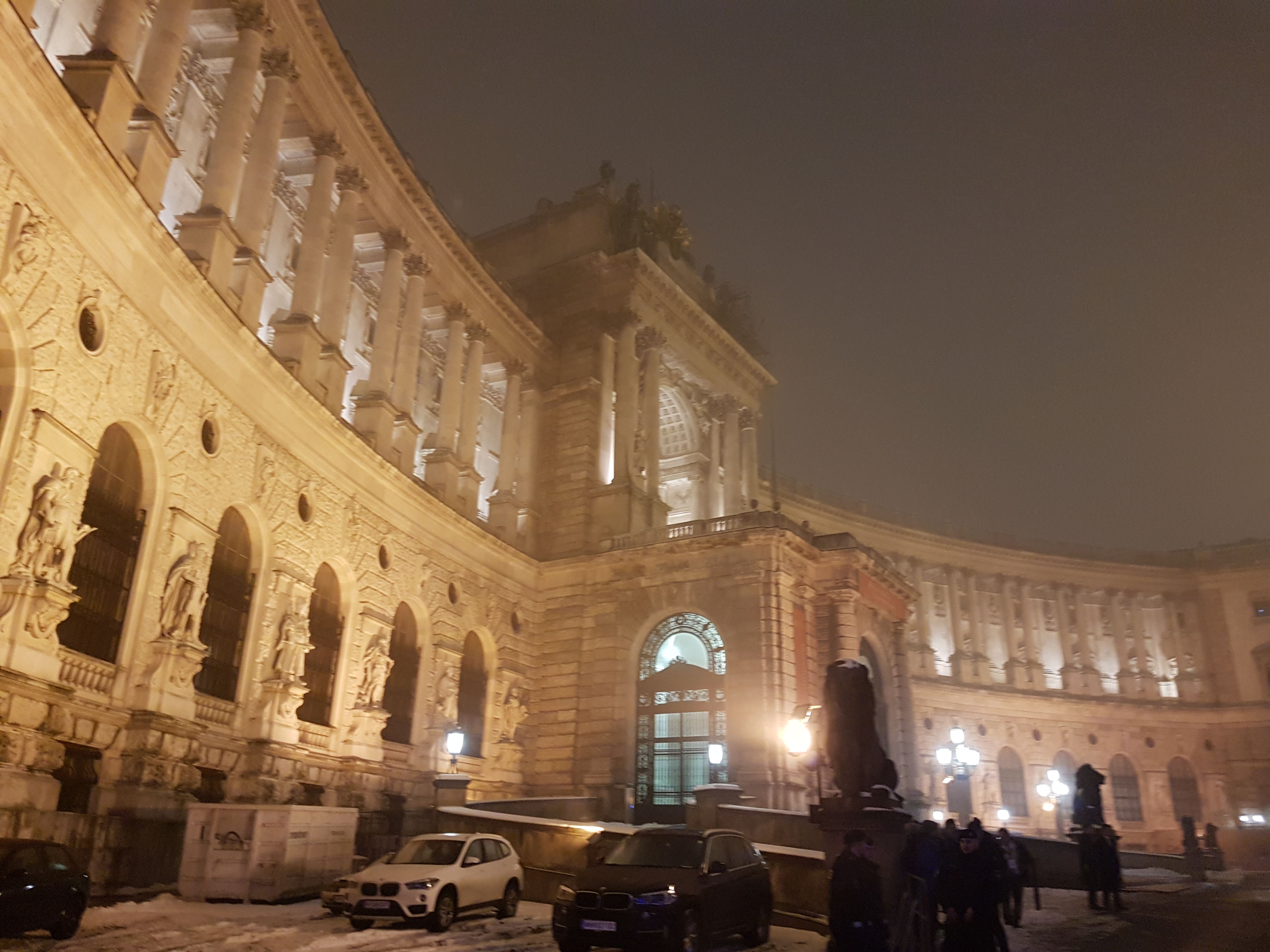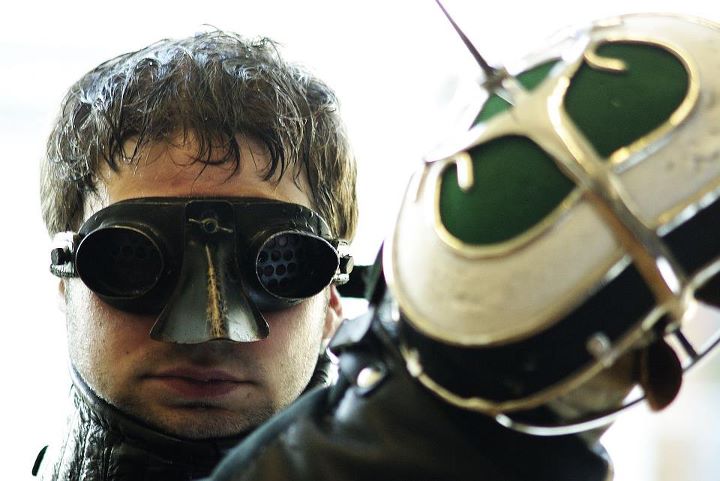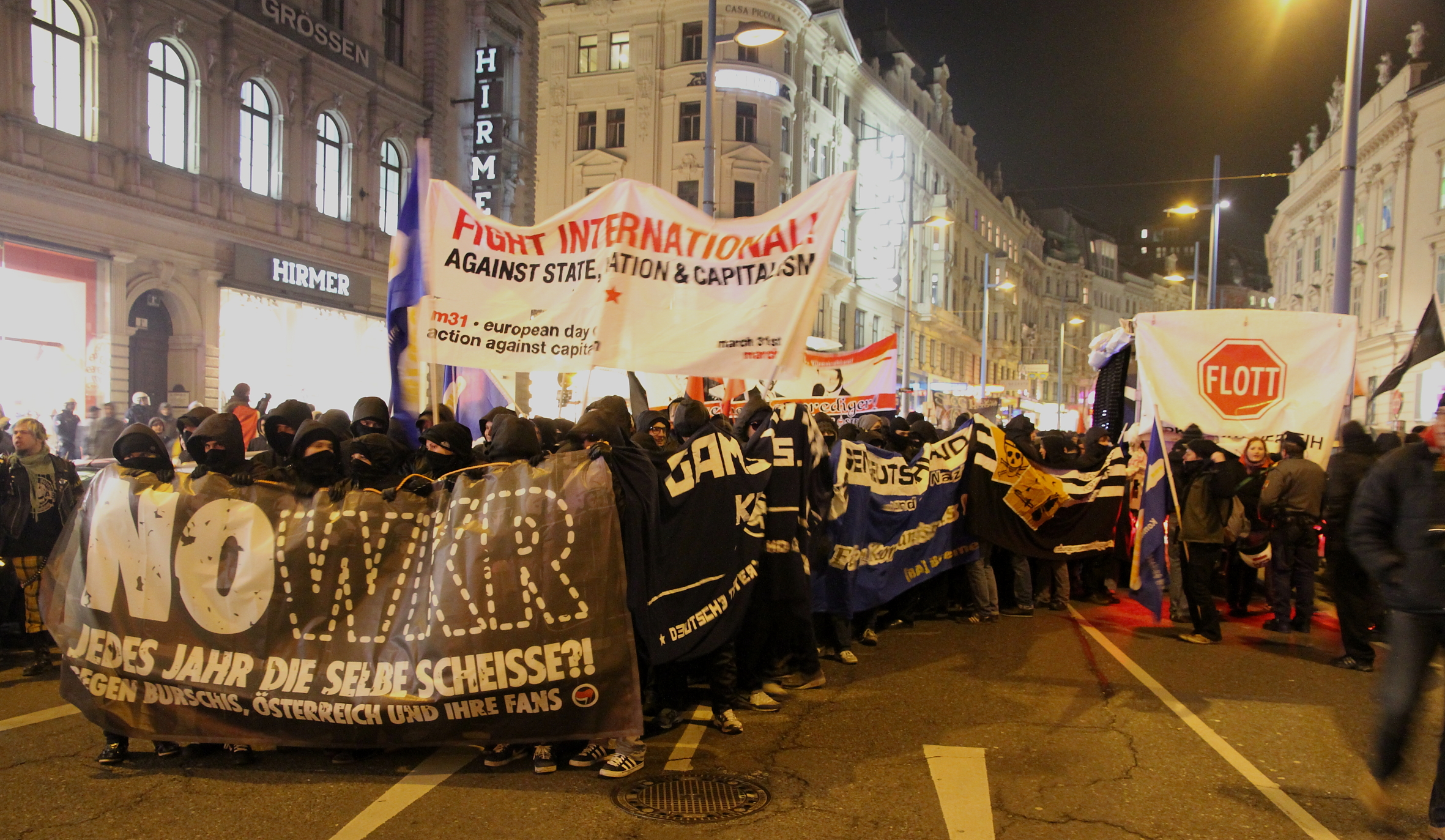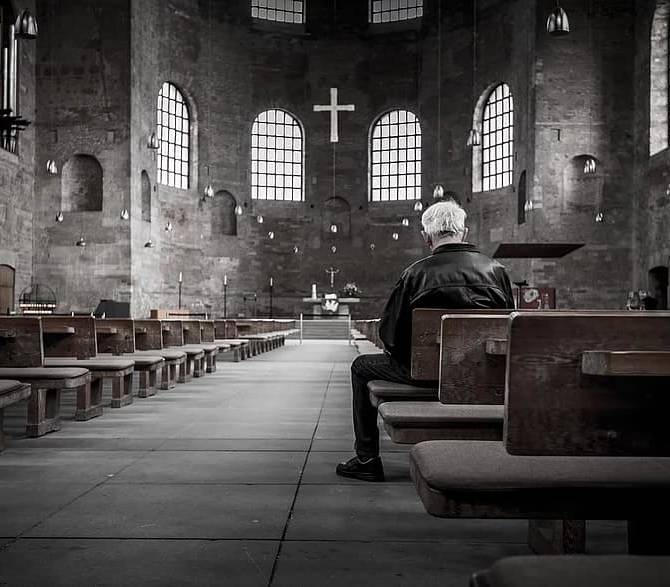By Ferenc Almássy.
Austria, Vienna – Between 2 and 4,000 demonstrators and violent antifa activists, 2,700 mobilized policemen, and the entire city center closed to traffic for almost half a day… On Friday, February 3rd, Vienna experienced again a strange atmosphere which is not adapted to its architecture and its status as an ancient imperial capital, nor to the Germans’ reputation as lovers of order.
On the other hand, the Akademikerball, the pretext for the chaos that required such heavy intervention from the State, was much closer to the idealized image of Vienna. In the Hofburg palace, in the city center, a ballroom welcomed around 2,500 participants on Friday evening, some of whom reserved their table for the modest sum of € 2,000.
As chief editor of the Visegrád Post, I was lucky enough to be invited to see for myself what this event was, and to enjoy a Viennese evening with notes of imperial nostalgia. Which, I confess, was not a displeasure to me.

Tradition First
The organization of this ball is not so old: the first one took place in 1952. But the purpose of the ball is to gather annually the members of the Germanic student fraternities (of Austria and Germany) which go back to The Napoleonic period.
The core of German nationalism appeared when Germanic people became irritated by the French imperial domination of Napoleon I. The Burschenschaften also set up to train patriotic students in combat and body discipline.
Even today, one can only become a full member of some of these fraternities by passing a test of combat with the saber. Aside from a three-color headband worn on the chest during ceremonies, the other proof of full and complete belonging to these fraternities is a scar worn on the face. During the duel, only the eyes and the nose are protected.

And so, 200 years stand behind this annual ball which is not so much for dancing, but comprises a high moment of networking and fellowship for these guardians of a patriotic tradition.
Fraternities, however, are quite diverse these days, both in their activities and politically. And it is clear that the Akademikerball of Vienna is resolutely “right-wing”, in the broad sense. From nostalgics of the Empire to center-right people, one finds many kinds of participants.
The organizers of the ball seem to want to please everyone. While I was expecting something very classic, in a very imperial style, I was unpleasantly surprised to attend the ceremony during a show with a Céline Dion style singer, dancing violinist and a smooth rope demonstration … “kitsch” is the word that comes to mind to describe this shifted and surprising moment. But I guess it’s a matter of taste.
Apart from that, the rest of the evening was particularly pleasant and enjoyable. Demonstration of polonaise by pairs of students, initiation to the quadrille and orchestras alterning waltz and cha-cha-cha pleased the guests in smocking and wearing fraternity caps, or evening gowns for the ladies. A Viennese ball which is not so different from others, after all.
Although FPÖ members made a speech at the beginning, it was not a political rally. The presence of non-Austrians in large numbers shows that the FPÖ had not sought to turn this ball into a political meeting for its own interest. At most, it can be suspected of having wanted to become the godfather of a tradition in danger, consistent with its patriotic ideology.
Yet a de facto politicized event




